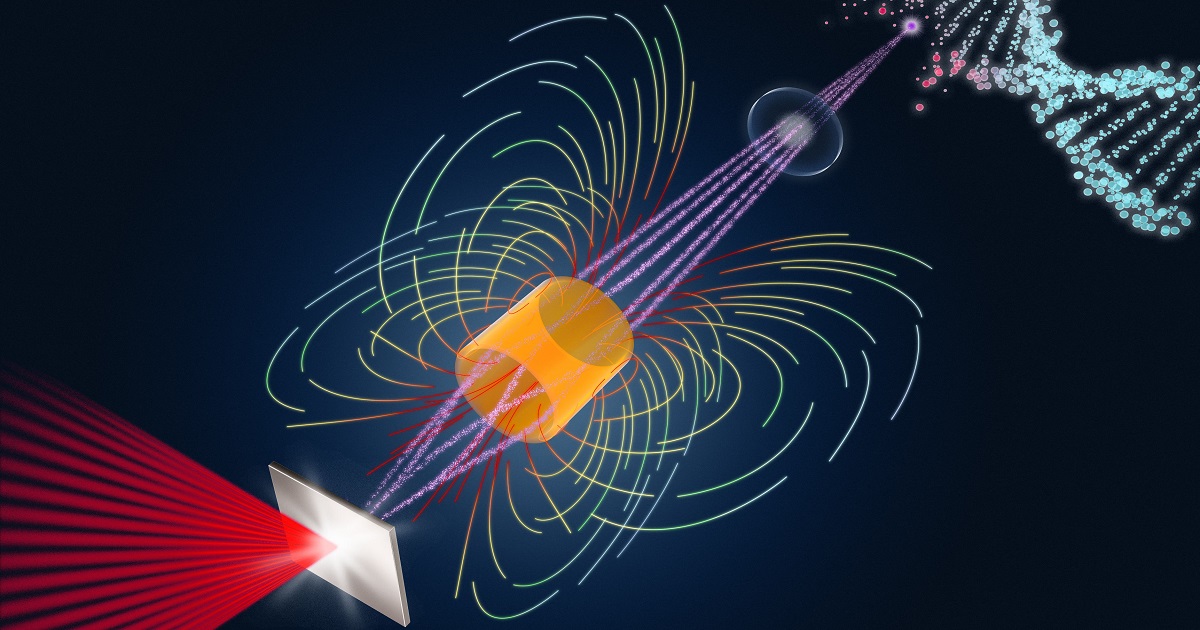March 29, 2022 -- Scientists have successfully tested the irradiation of tumors with laser protons in animal models for the first time, according to research published recently in the journal Nature Physics. The rapid irradiation method may prove to be a breakthrough in cancer therapy.
Cancer treatment using protons accelerated to high energies and bundled into small, precise targetable bunches are an alternative to traditional radiation therapy, since protons can penetrate deep into the tissue where they deposit most of their energy in the tumor, destroying the cancer while leaving the surrounding tissue largely intact.
However, proton therapy is more complex than x-ray therapy as it requires elaborate accelerator facilities to generate the fast protons and transport them to the patient.
A research team has spent more than a decade investigating how proton sources based on laser-plasma acceleration (LPA) can fill this gap (Nature Physics, March 14, 2022, Vol. 18, pp. 316-322). The team, led by a group from Helmholtz-Zentrum Dresden-Rossendorf (HZDR), has been working on a high-power laser to generate strong and extremely short light pulses. The pulses are fired at a thin plastic or metal foil, which causes electrons to be knocked out of the foil, creating a strong electric field that can bundle protons into pulses and accelerate them to high energies, the authors said in a release.

The team made progress over the past two years, making the shape of the laser flashes more precise.
“Above all, the precise shape of the laser flashes is particularly important,” lead author and HZDR scientist Florian Kroll, PhD, explained. “We can now tailor them to create proton pulses that have sufficient energy and are also stable enough.”
Putting LPA to the test
The authors said that the laser-accelerated proton pulses generate valuable biological information.
“We found that our laser-driven proton source can generate biologically valuable data,” said Kroll. “This sets the stage for further studies that will allow us to test and optimize our method.”
Another special feature of laser-accelerated proton pulses is their enormous intensity. While in conventional proton therapy the radiation dose is administered in a span of a few minutes, the laser-based process could occur within a millionth of a second.
“There are indications that such a rapid dose administration helps spare the healthy surrounding tissue even better than before,” explained Elke Beyreuther, PhD, co-author of the study. “We want to follow up on these indications with our experimental setup and conduct preclinical studies to investigate when and how this rapid irradiation method should be used to gain an advantage in cancer therapy.”
Copyright © 2022 scienceboard.net







